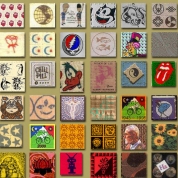LSD

History
LSD was first synthesised in the laboratory of Albert Hoffman in 1938 from the alkaloids found in the ergot fungus. However, its psychoactive properties were not fully appreciated until 1943, and it was marketed under the trade name ‘Delysid’ by Sandoz Laboratories in 1947 for use in treating psychiatric patients. LSD has an interesting history and has had many noted advocates for its ability to provoke the ‘big’ philosophical questions, such as the meaning of life, sex (although LSD is not noted for its aphrodisiac qualities) and mortality, these are often the genesis of a bad ‘trip’. Beginning in the 1950s the US Central Intelligence Agency (CIA) began a research program code named Project MK-ULTRA. Experiments included administering LSD to CIA employees, military personnel, people at both ends of the intelligence and social spectrum and random members of the general public in order to study their reactions, often without the subject's knowledge. The project was revealed in a US congressional report in 1975, after much speculation about its existence, design and purpose.
LSD began to become popular recreationally in the US in the 1960s. The increase in its use coincided with the rise of the psychedelic/hippy movement, to whose devotees it was considered to be mind-expanding. This trend soon caught on in the UK, and ‘acid trips’ have continued to have a place in certain sub-cultures (especially amongst ‘e’ generation clubbers, where it was known throughout the 1990’s as ‘acc-eeid’) up to the present day where it remains popular in ‘club’ settings, something that would have been unthinkable to the original users. It was scheduled in the UK under the Misuse of Drugs Act 1971.
